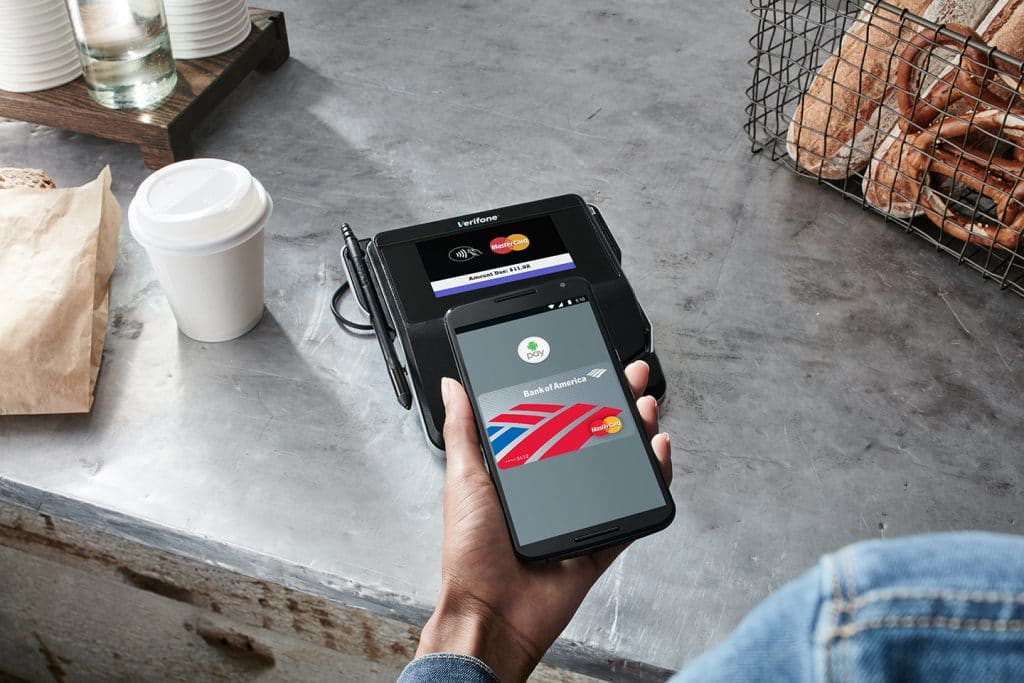Android has rolled out its new mobile payment service to the UK after its US launch in 2015 – but how will it fare without full bank support? And what does its introduction mean for UK marketers?
Could Android Pay be a unique opportunity for marketers to deliver new mobile experiences?
On 18 May, Android rolled out its Apple Pay competitor to the UK market. Now, anyone with a device running Android 4.4 or higher, and fitted with an Near Field Communication (NFC) chip, can sign up to the service and use their device for contactless payment. That is, almost anyone.
At the time of writing, four of the biggest banks in the UK have thus far abstained from offering the service – including Santander, the bank with the most popular consumer current account in the country – as well as Natwest, RBS and Barclays.
Barclays has issued an official statement outlining that it has “no intention of offering the service in the UK”, but that it intends to launch its own rival mobile pay app this year for Barclaycard customers.

Image via Jemimus
While the use of contactless cards has worked its way into our everyday use, according to a new study by Fujitsu (42 per cent of UK Consumers use contactless payments on a regular basis), mobile pay is still something of an anomaly. Just a fifth of UK consumers regularly use the technology and a mere 10 per cent use wearable tech for contactless payments.
One of the most prominent examples of the convenience of contactless is in TfL. “Over 14 per cent of all pay-as-you-go journeys across TfL services are now made using contactless, with over 60 million journeys made” between September 2015 and February 2016, the London transport firm revealed earlier this year.
Dennis Jones, CEO of Judo Payments – mobile payments company specialising in app-commerce – postulates why this could be. “Touching a contactless card is both faster and feels safer than touching your phone to a solid terminal,” he tells Figaro Digital. “People have an aversion to slamming their phone against some hard piece of plastic…there’s no benefit to using your phone versus using your contactless card.”
How will Android Pay survive without four of the major banks on board?
It seems the bank backing isn’t something Google is worried about. While the uptake of the technology is fairly slow, this won’t quite get the fire out from under the feet of the banks, yet. According to the study by Fujitsu, more than a third (37 per cent) of European consumers will move bank if theirs does not offer up-to-date technology.
Jones explains: “The only way you get a new payment adopted in the industry is because the consumers demand it. They’re going to vote with their feet. If those people actually do vote with their feet, that’s what’s going to cause the banks to change their minds.”
The suggestion seems to be that the future holds a unified payment method via mobile – using the mobile wallet apps preinstalled on 93 per cent of UK smartphones, according to Caine.
“What you’re going to see is the way in which people pay is going to fragment way before it comes together with some kind of unified approach,” agrees Jones, while we move “closer and closer to a world where there’s no physical wallet.”
We are seeing a change regarding how people use the “supercomputers in their pockets”, and how they interact with the world and the businesses around them, he adds.
Although RBS, NatWest or Santander have yet to adopt the technology, it is likely they will jump on the Android Pay bandwagon in the coming months.
An RBS spokesperson says: “Although we are not introducing Android Pay at this time, we will be making an announcement about our involvement as soon as we can,” whereas a Santander spokesperson says: “We are working on allowing customers to have access to Android Pay – and will be able to tell them more in the coming months.”
Header Image via Mastercard & Android Pay

